“I realized the commotion was the sound of tenants fleeing,” he remembers. Tony could smell smoke; it wasn't a false alarm.
A fellow resident came to his door and they headed to the nearest stairwell, but it was too late. “It was full of heavy smoke, with no visibility. Completely impassable,” Tony says. “That's when I clued in—we were trapped on my floor.”
Along with eight other residents, including two children, Tony took refuge in his apartment and called 911. “I remember seeing the two kids being comforted by their grandmother and thought, Don't let this be their last memory of this world.”
After they were rescued by firefighters, they were led onto city buses where they took shelter from the cold.
That was when The Salvation Army arrived.
From Chaos to Calm
The Salvation Army's emergency disaster services (EDS) in Ottawa is the busiest in the territory. From house and apartment fires, such as Tony's, to domestic violence situations and major national disasters, the EDS team is on call 24 hours a day, seven days a week, all year round. Last year, they answered around 100 calls, averaging two per week.
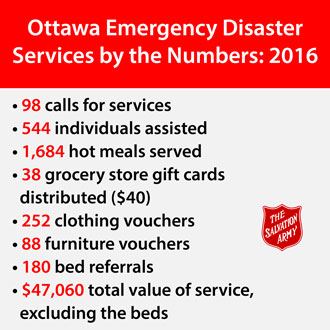 Operating out of the Army's Booth Centre, the EDS team is led by Craig Dunbar, who was one of the first Salvation Army faces Tony saw at the scene of the fire, handing out blankets, water bottles and cookies to victims.
Operating out of the Army's Booth Centre, the EDS team is led by Craig Dunbar, who was one of the first Salvation Army faces Tony saw at the scene of the fire, handing out blankets, water bottles and cookies to victims.
“Sitting on buses, freezing, not being told what was going on—the residents' anxiety levels were through the roof,” says Dunbar. “But when we arrived, it really changed the mood. Everybody knew that they were going to be OK; they would be looked after.”
As a long-time volunteer with the Booth Centre, Tony was familiar with the Army's emergency services and felt reassured by the presence of people he knew. “I even joked with them, 'I've been waiting for you to show up!' ” he smiles. “I think they were more surprised to see me than I was to see them.”
Because of his involvement with the Army, Tony had a sense of what to expect, but being on the receiving end of their assistance gave him a new appreciation for their services. “It was really neat to see how the volunteers calmed the confused and visibly upset tenants.”
The Little Things
With approximately 120 residents, Tony's apartment fire was a large operation for the EDS, requiring a deployment of two teams over the course of 12 hours. The first team arrived at 3 a.m. to hand out comfort items and offer emotional support. The second team provided breakfast for residents at a nearby community centre.
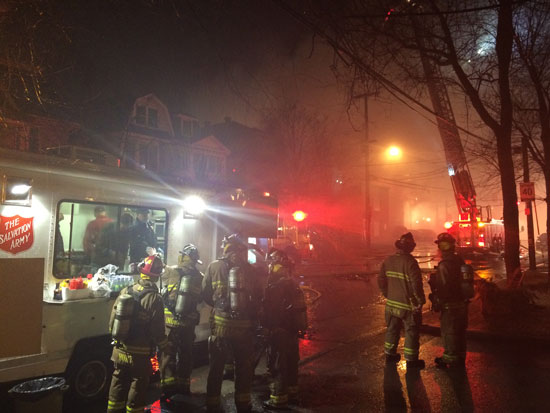 Most of the calls the Army's emergency disaster services receives are fire-related
Most of the calls the Army's emergency disaster services receives are fire-related
The EDS is dispatched through four different partnerships with the City of Ottawa, with pages coming from the Ottawa Fire Services, and its operations are divided into two parts: victim services and canteen services.
The Army's victim services has 50 active volunteers divided into five teams of 10. The teams rotate on one-week intervals, during which they answer any pages that come through. The Army provides immediate on-the-ground assistance, assessments and referrals, and post-incident follow-up, ensuring clients have the resources they need to rebuild.
“The majority of what we do involves fires—supporting people displaced by fires and the emergency workers at the scene,” says Dunbar. “But we're seeing an increase in call volume from the Ottawa police's victim crisis unit. Most of those people are in a domestic abuse or an assault situation, and they've come away from it with nothing. Normally, they're looking for clothing and furniture vouchers and food.”
The victim services team operates out of a converted ambulance, donated to the Army by the City of Ottawa.
“It's a mobile comfort station,” explains Dunbar. “There's seating for seven in the back, so when we get a personal disaster assistance call involving a family, they can come in the truck, out of the elements, away from onlookers, and they're not standing there watching their house burn down.”
The truck is stocked with snacks, clothing, toys and hygiene products, and has a built-in DVD player with children's movies. With physical needs taken care of, the EDS team can help victims begin to process the events and plan next steps.
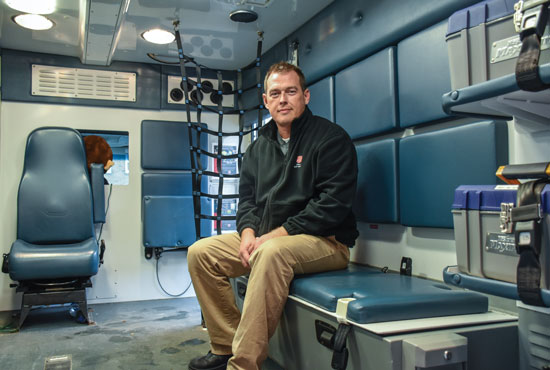 Inside the victim services truck, there is seating for seven people, snacks, clothing and other essential supplies (Photo: Kristin Ostensen)
Inside the victim services truck, there is seating for seven people, snacks, clothing and other essential supplies (Photo: Kristin Ostensen)
For Dunbar, providing comfort in those moments is as much about the little things as it is the big things. “We always carry warm socks and hats in the truck,” he shares, “and I like to carry fun stuff. I figure, if you're giving out socks, why give a pair of boring tube socks?”
Dunbar remembers attending to a house fire one night involving a mother, two teenage boys and a 12-year-old girl. As they watched their home go up in flames from the neighbour's house across the street, emotions were running high.
Noticing that they were barefoot, Dunbar grabbed a bin of clothing from the truck and brought it to them. “I said, 'Guys, whatever you need, just take it.' And the girl saw this pair of fuzzy socks in there. She put them on and started dancing around the house, and she was the happiest kid I've seen.
“We can make little differences like that.”
Always Ready
While most of the calls the Army receives are for victim services, the canteen is a vital part of the EDS operations. Along with the converted ambulance, the Army has a canteen truck, which is manned by members of the Retired Ottawa Fire Fighters Association and stored at the fire station. The truck maintains a stock of fresh water and 170 to 200 meals at all times—hamburgers, veggie burgers and even a gluten-free option.
“That means we're ready to go at any given moment,” Dunbar says. “The page goes out, we jump in the truck and we go. No other program does that. It usually takes at least an hour or two to prep.”
That kind of readiness, combined with the Army's diverse services, vast experience and large roster of volunteers, makes the Army invaluable when disaster strikes. When a Via Rail passenger train struck a local transit bus in September 2013, the Army deployed canteen services and brought in a spiritual care team, including chaplains and corps officers, to provide support for the families of victims.
The Salvation Army was also called in when a lone gunman shot a Canadian soldier at the National War Memorial in October 2014, to provide food for first responders. “Our little truck with its 15-inch grill served more than 500 meals that evening,” Dunbar says.
Events such as these have cemented the Army's place in the emergency disaster operations for the city. Dunbar represents the Army as part of Ottawa's emergency management working group, which meets monthly. “That means that we are part of any planning that happens in the city,” he says. “We can speak into the city's emergency plan and help make changes.”
For Dunbar, it's about building relationships—with the city, with other emergency services providers and, especially, with victims.
“We arrive at a scene when somebody's watching their house burn down. It's the worst moment of their life,” he says. “And we have a mobile team that comes and says, 'We've got you, we're here to help.' ”




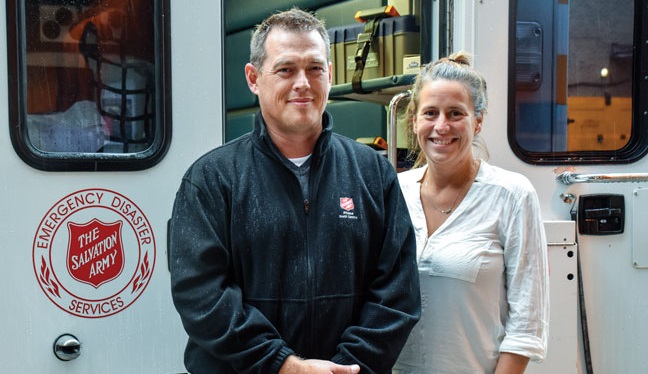
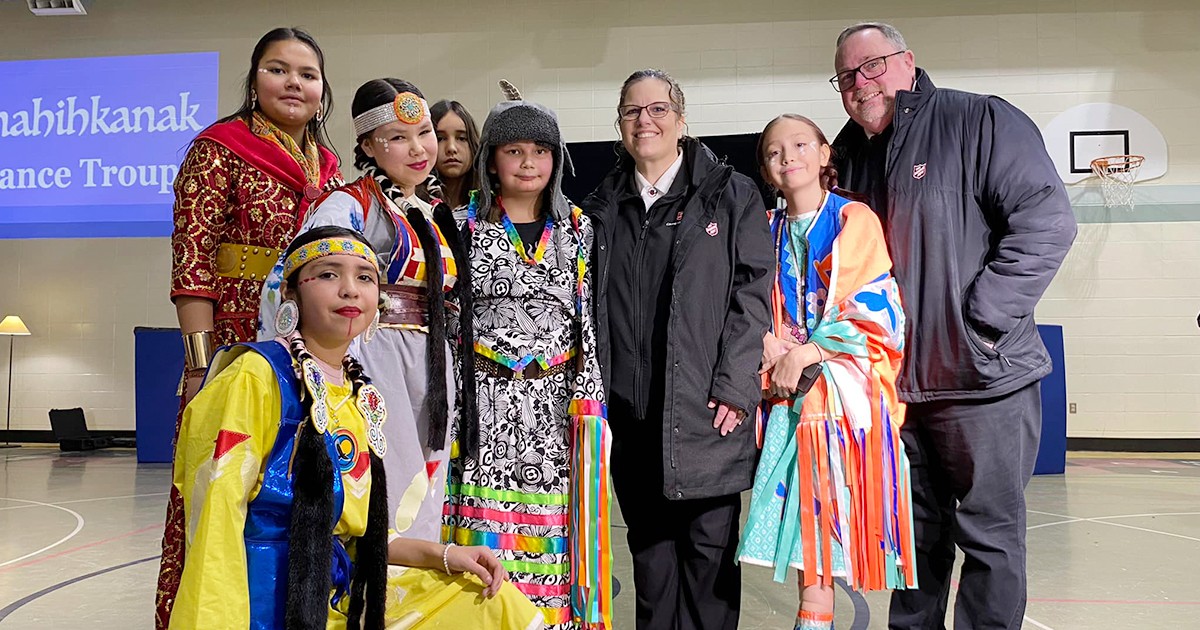




Leave a Comment